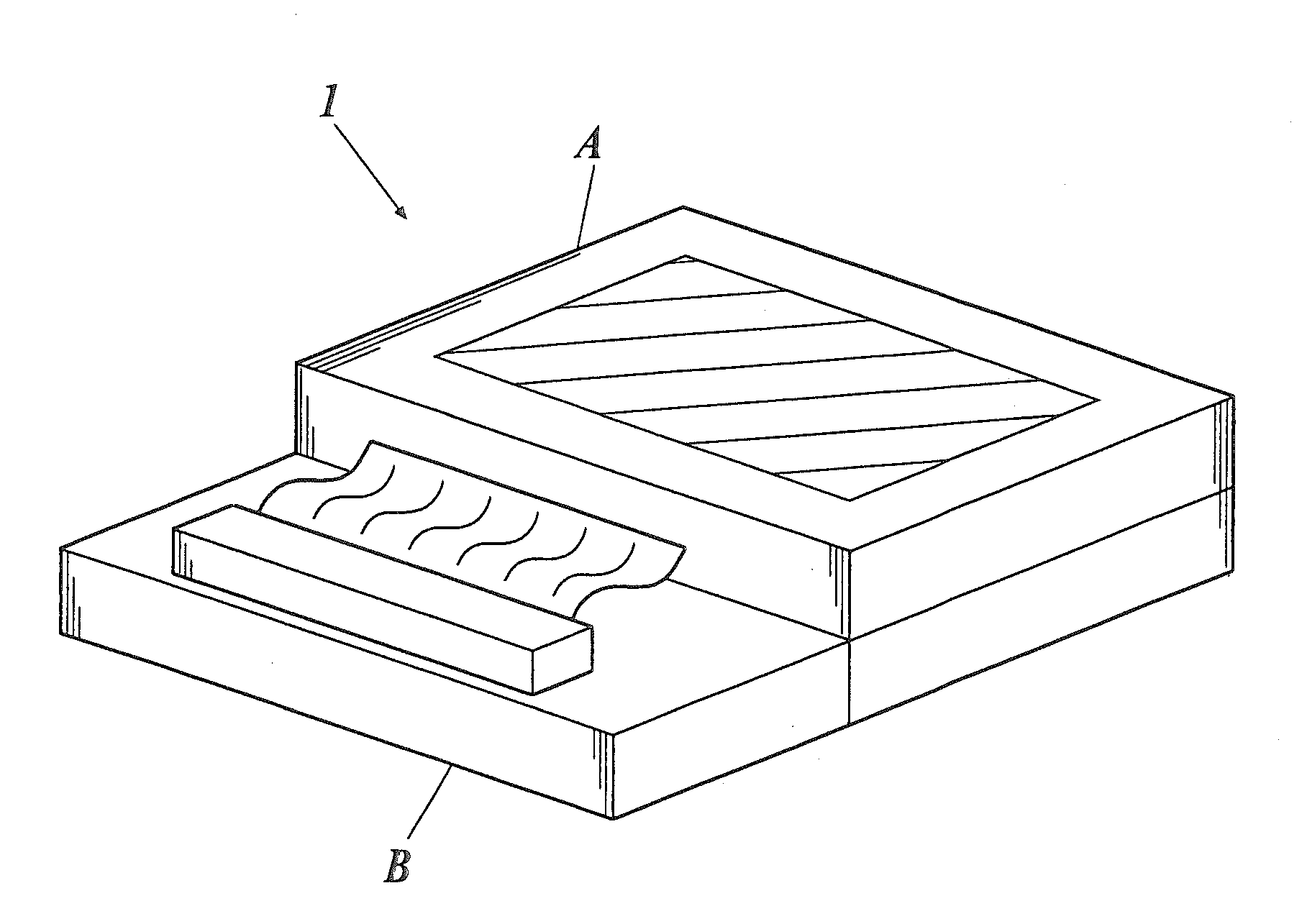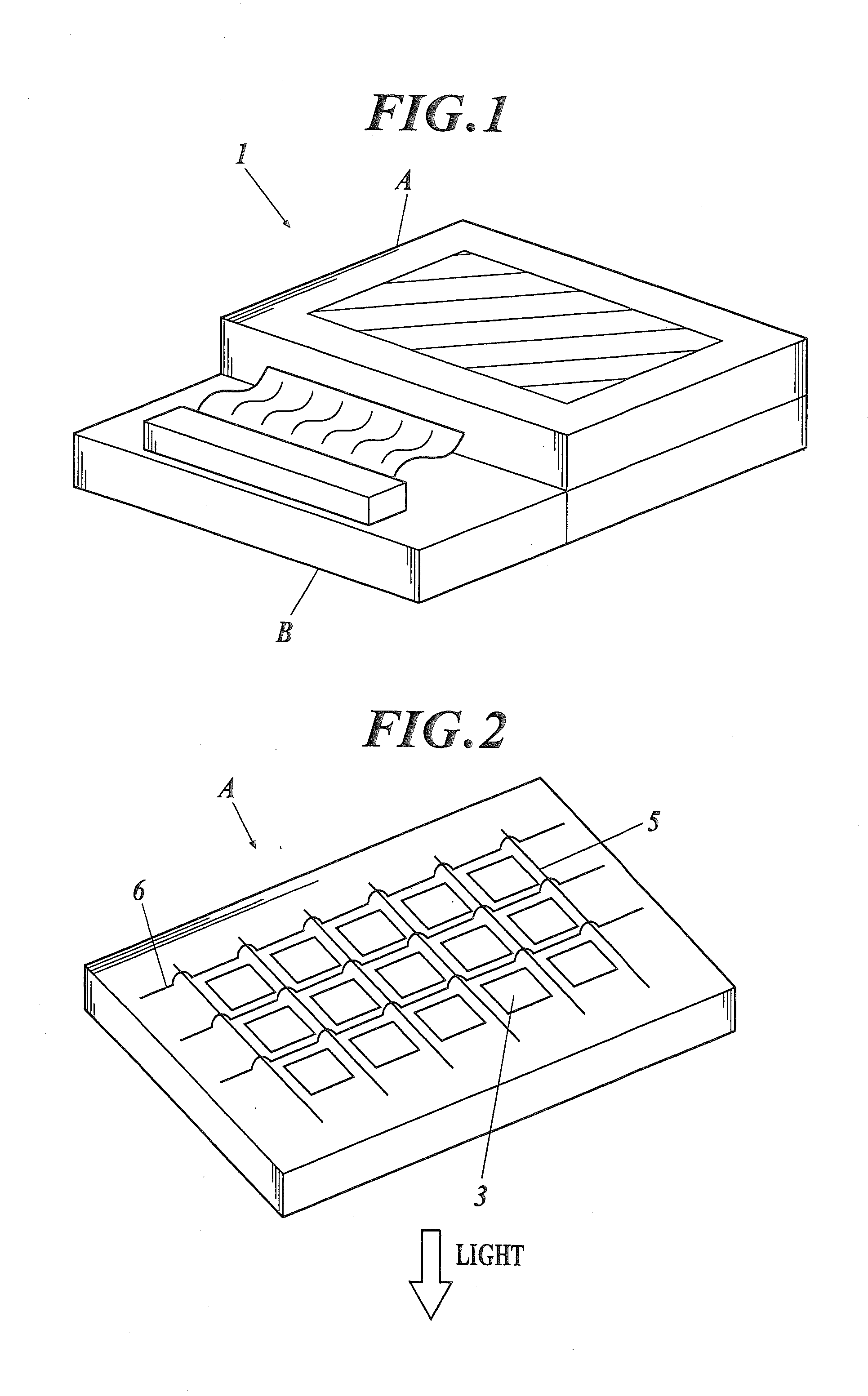Iridium complex compound, organic electroluminescent element material, organic electroluminescent element, illumination device and display device
a technology of organic electroluminescent elements and compound compounds, which is applied in the direction of cadmium organic compounds, group 3/13 element organic compounds, and discharge tubes luminescnet screens, etc., can solve the problems of chroma stability (that, chroma shift) at the time when the element is continuously driven, and achieves high light emission efficiency and long life , the effect of enhancing the thermal stability and sublimability of the organic metal complex
- Summary
- Abstract
- Description
- Claims
- Application Information
AI Technical Summary
Benefits of technology
Problems solved by technology
Method used
Image
Examples
example 1
Fabrication of Organic EL Element 1-1
[0308]Patterning was performed for a substrate (NA45 made by NH Technoglass Corporation) in which indium tin oxide (ITO) was deposited as an anode to a thickness of 100 nm on a glass substrate with dimensions of 100 mm×100 mm×1.1 mm. Thereafter, this transparent support substrate provided with the ITO transparent electrode was subjected to ultrasonic cleaning by isopropyl alcohol, was dried by dry nitrogen gas, and was subjected to UV ozone cleaning for 5 minutes.
[0309]On this transparent support substrate, a thin film was formed by a spin coat method under conditions of 3000 rpm and 30 seconds by using a solution obtained by diluting poly(3,4-ethylenedioxythiophene)-polystyrenesulfonate (PEDOT / PSS, made by H. C. Starck GmbH, Clevios P VPAI 4083) to 70% by pure water. Thereafter, the formed thin film was dried at 200° C. for 1 hour, and a first hole transportation layer with a film thickness of 20 nm was provided.
[0310]This transparent support su...
example 2
Fabrication of Organic EL Element 2-1
[0336]Patterning was performed for a substrate (NA45 made by AvanStrate Inc.) in which indium tin oxide (ITO) was deposited as an anode to a thickness of 100 nm on a glass substrate with dimensions of 100 mm×100 mm×1.1 mm. Thereafter, this transparent support substrate provided with the ITO transparent electrode was subjected to ultrasonic cleaning by isopropyl alcohol, was dried by dry nitrogen gas, and was subjected to UV ozone cleaning for 5 minutes.
[0337]On this transparent support substrate, a thin film was formed by the spin coat method by using a solution obtained by diluting poly(3,4-ethylenedioxythiophene)-polystyrenesulfonate (PEDOT / PSS, made by Bayer AG, Baytron P Al 4083,) to 70% by pure water. Thereafter, the formed thin film was dried at 200° C. for 1 hour, and a first hole transportation layer with a film thickness of 30 nm was provided.
[0338]On this first hole transportation layer, a thin film was formed by the spin coat method by...
example 3
Fabrication of white light emitting organic EL element 3-1
[0347]Patterning was performed for a substrate (NA45 made by NH Technoglass Corporation) in which indium tin oxide (ITO) was deposited as an anode to a thickness of 100 nm on a glass substrate with dimensions of 100 mm×100 mm×1.1 mm. Thereafter, this transparent support substrate provided with the ITO transparent electrode was subjected to ultrasonic cleaning by isopropyl alcohol, was dried by dry nitrogen gas, and was subjected to UV ozone cleaning for 5 minutes.
[0348]This transparent support substrate was fixed to a substrate holder of a commercially available vacuum evaporation device. Meanwhile, 200 mg of the α-NPD was put as a hole transportation material into a molybdenum-made resistance heating boat, 200 mg of OC-11 was put as a host compound into another molybdenum-made resistance heating boat, 200 mg of the ET-11 was put as an electron transportation material into another molybdenum-made resistance heating boat, 100 ...
PUM
| Property | Measurement | Unit |
|---|---|---|
| temperature | aaaaa | aaaaa |
| carbon number | aaaaa | aaaaa |
| work function | aaaaa | aaaaa |
Abstract
Description
Claims
Application Information
 Login to View More
Login to View More - R&D
- Intellectual Property
- Life Sciences
- Materials
- Tech Scout
- Unparalleled Data Quality
- Higher Quality Content
- 60% Fewer Hallucinations
Browse by: Latest US Patents, China's latest patents, Technical Efficacy Thesaurus, Application Domain, Technology Topic, Popular Technical Reports.
© 2025 PatSnap. All rights reserved.Legal|Privacy policy|Modern Slavery Act Transparency Statement|Sitemap|About US| Contact US: help@patsnap.com



